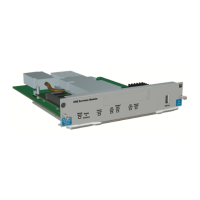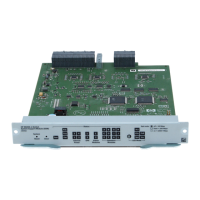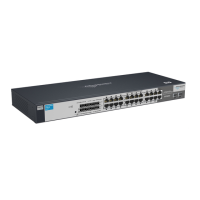8-26
Classifier-Based Software Configuration
Traffic Classes
For example, QoS policies support QoS-specific actions, such as rate-limiting,
802.1p-priority, IP-precedence, and DSCP-codepoint assignment. Port and
VLAN mirroring policies support mirror-destination assignment for matching
packets. PBR policies support specifying the IP next-hop and IP default next-
hop, tunnel ID, or null for matching packets.
1. To create a service policy that performs feature-specific actions on
selected packets, enter the policy < feature-name > command from the
global configuration context.
A traffic policy consists of one or more actions that are configured for each
class of traffic. The configured actions are executed on packets that match a
match statement in a class. No policy action is performed on packets that
match an ignore statement.You can configure multiple classes in a policy.
2. To configure the actions that you want to execute on packets that match
the match criteria in a specified class, enter one or more class action
commands from the policy configuration context.
Context: Global configuration
Syntax: [no] policy <qos | mirror | pbr> <policy-name >
Defines the name of a service policy for a feature and enters
the policy configuration context.
<policy-name > is a text string (64 characters maximum).
Context: Policy configuration
Syntax: [no] [seq-number] class < ipv4 | ipv6 > <classname >
action <action-name > [action <action-name > ...]
Defines the action(s) to be applied on a pre-configured
IPv4 or IPv6 traffic class when a packet matches the match
criteria in the class.
You can enter multiple class-action statements for the
same class. Note that the actions supported for a class
command differ according to the feature-specific policy
(for example, QoS, mirroring, and PBR) configured with
the policy command in Step 1.
[no] [seq-number] class < ipv4 | ipv6 > <classname >
•[seq-number] — The (optional) seq-number parameter
sequentially orders the class-action statements in a
policy configuration. Actions are executed on
matching packets in numerical order. Default: Class-
action statements are numbered in increments of 10,
starting at 10.

